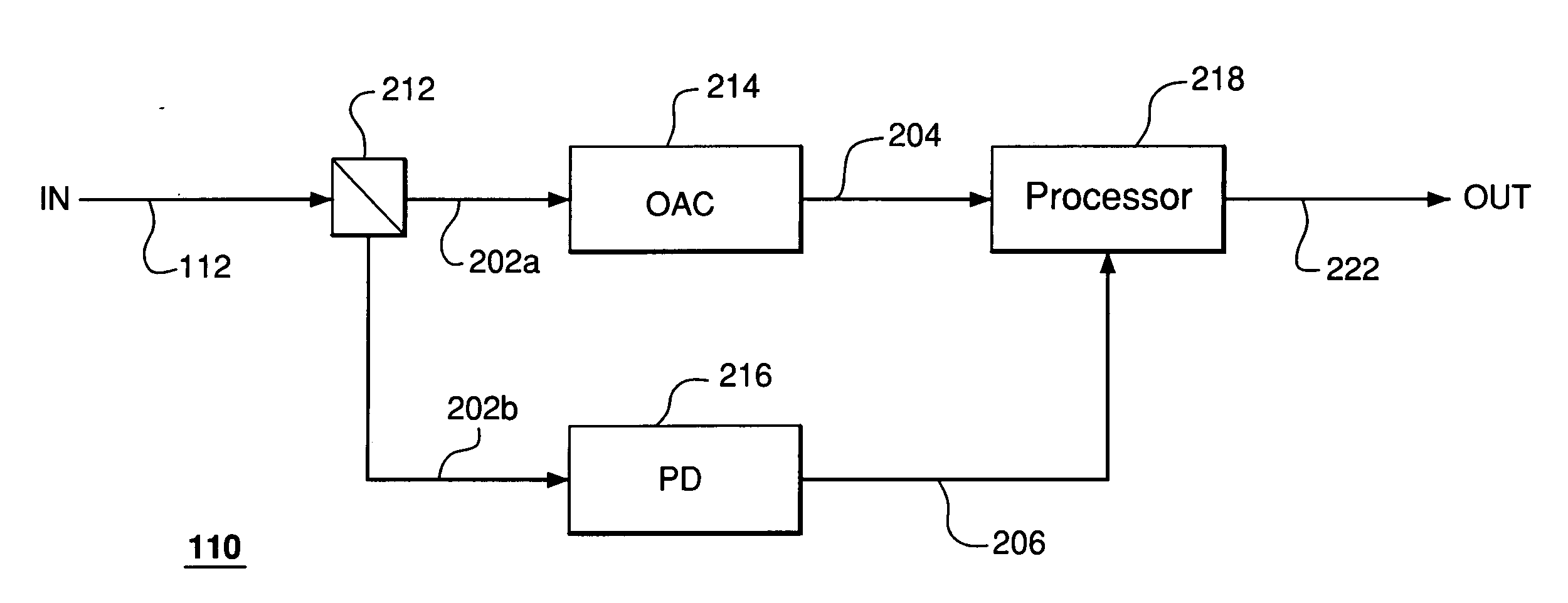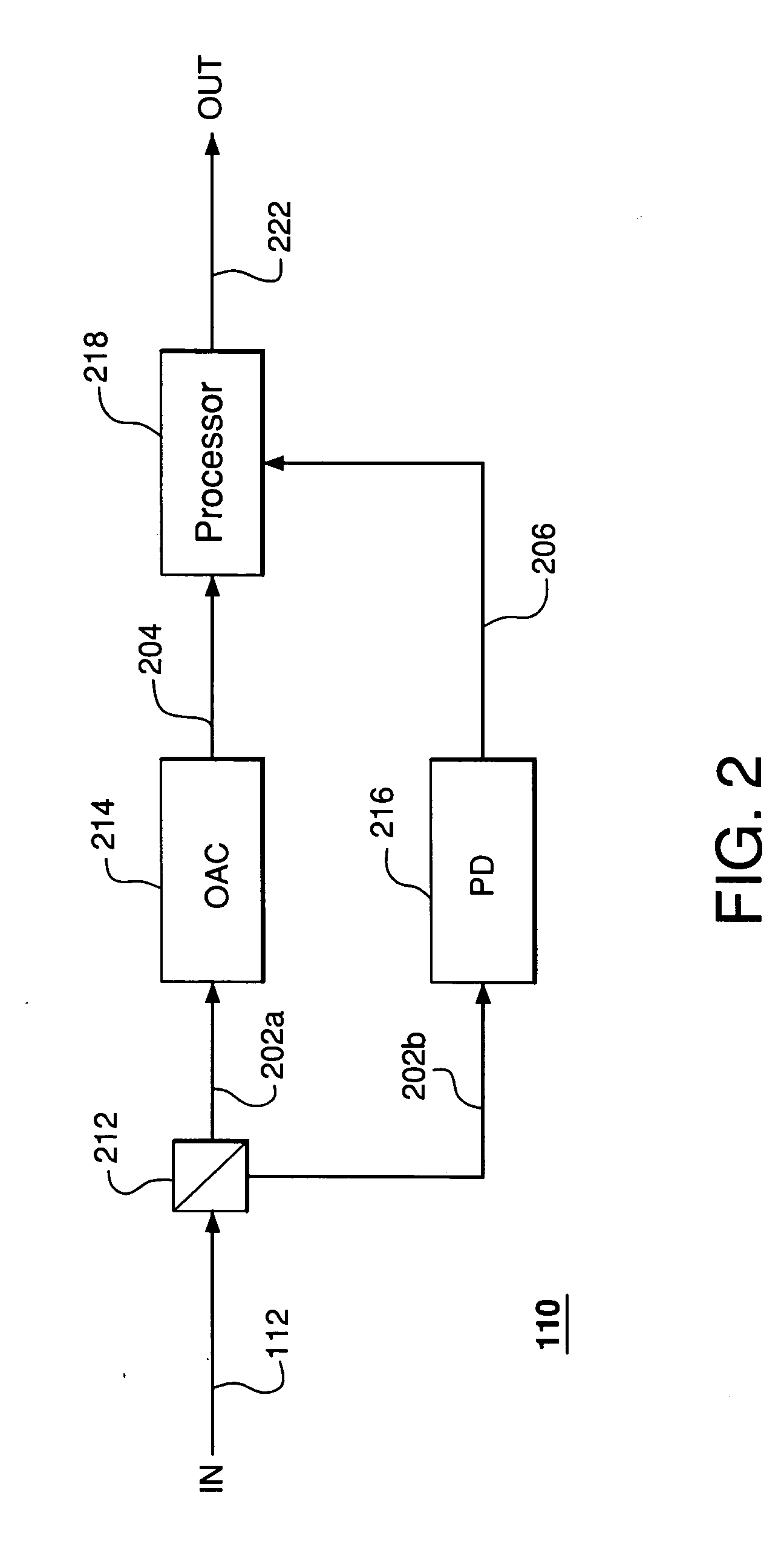Performance monitoring based on optical autocorrelation
a performance monitoring and autocorrelation technology, applied in the field of optical communication systems, can solve the problems of insufficient application of optical performance monitoring techniques, typically requires high-speed electronics,
- Summary
- Abstract
- Description
- Claims
- Application Information
AI Technical Summary
Benefits of technology
Problems solved by technology
Method used
Image
Examples
Embodiment Construction
[0018] Reference herein to “one embodiment” or “an embodiment” means that a particular feature, structure, or characteristic described in connection with the embodiment can be included in at least one embodiment of the invention. The appearances of the phrase “in one embodiment” in various places in the specification are not necessarily all referring to the same embodiment, nor are separate or alternative embodiments mutually exclusive of other embodiments.
[0019]FIG. 1 illustrates a fiber optic network 100, which utilizes an optical performance monitor (OPM) 110 according to one embodiment of the present invention. Network 100 is configured to carry optical signals modulated with data from a source node 102 to a destination node 108 via a plurality of intermediate nodes 104. A long-haul, metro, or access optical transmission link, such as link 106, may connect a pair of nodes, such as intermediate nodes 104A and 104B shown in FIG. 1. Link 106 may include optical amplifiers (not sho...
PUM
 Login to View More
Login to View More Abstract
Description
Claims
Application Information
 Login to View More
Login to View More - R&D
- Intellectual Property
- Life Sciences
- Materials
- Tech Scout
- Unparalleled Data Quality
- Higher Quality Content
- 60% Fewer Hallucinations
Browse by: Latest US Patents, China's latest patents, Technical Efficacy Thesaurus, Application Domain, Technology Topic, Popular Technical Reports.
© 2025 PatSnap. All rights reserved.Legal|Privacy policy|Modern Slavery Act Transparency Statement|Sitemap|About US| Contact US: help@patsnap.com



